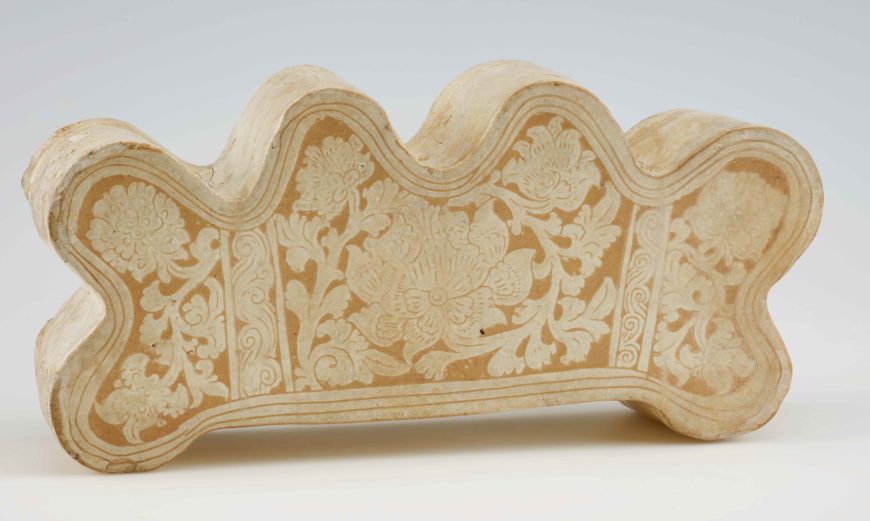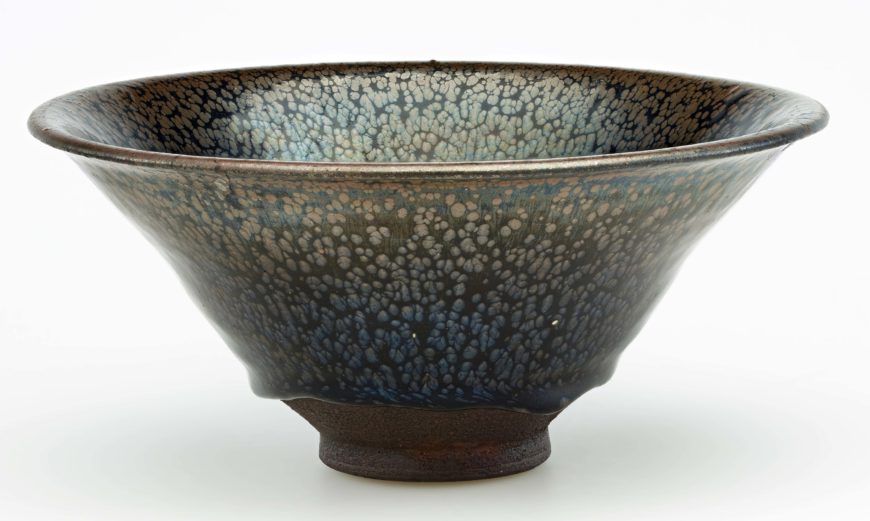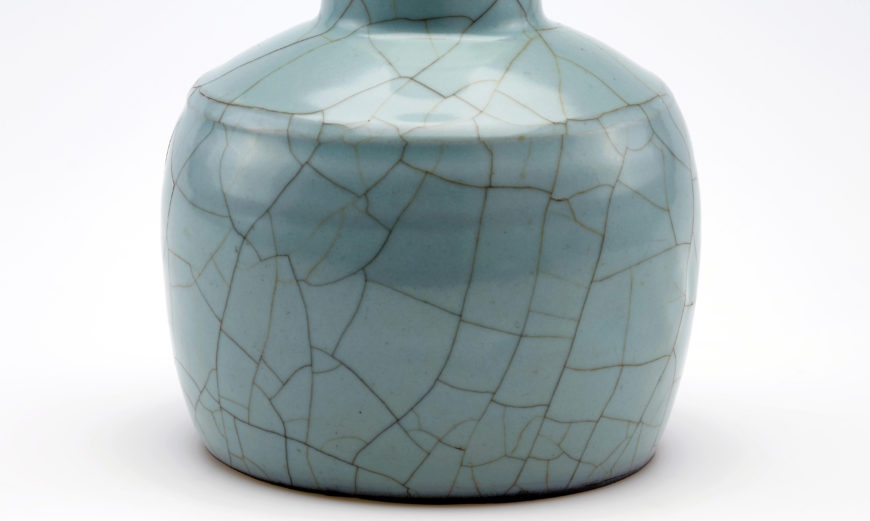Ding ware bowl, 960–1126 C.E., Northern Song dynasty, China (Shanghai Museum of Art)
[0:00] [music]
Dr. Steven Zucker: [0:03] We’re in the ceramics galleries in the Shanghai Museum, and we’re looking at a Northern Song bowl.
Dr. Kristen Brennan: [0:12] It’s a Ding ware. In fact, Ding ware always refers to this white porcelain, one of the earlier porcelains. It was something that was prized for its purity of color, its lightness of weight.
Dr. Zucker: [0:23] The walls of the ceramic bowl themselves are incredibly thin. This would have been thrown on a wheel, and the glaze probably would have been added with a brush while it was still on the wheel. The walls are even, and there’s this beautiful, elegant S-curve to the edge.
Dr. Brennan: [0:38] The body was made out of kaolin clay, the material of porcelain, so that it could be fired at high temperatures and glazed. One of the telltale marks of a Ding ware is this metal around the rim.
Dr. Zucker: [0:51] That dark line at the very lip of the bowl is a thin piece of metal that’s been wrapped around that edge. That’s added to cover the unglazed section at the very lip, because these would have been fired in a stacked manner, and so the glaze would not have been allowed to touch the rim itself.
Dr. Brennan: [1:08] So if the artisans were then going to submit these to the court for use, they would need that rim in order to use it as tableware.
Dr. Zucker: [1:15] The S-curve of the contour of the bowl is echoed by the incising of the decoration within the bowl. You can see that there are reeds and there are two geese with wonderful S-curved necks.
Dr. Brennan: [1:26] It’s very elegant, not at all ostentatious.
Dr. Zucker: [1:29] You can see that not only in its shape but in the evenness of the glazing, in the sensuous warmth of the white color of the glaze itself, and then in the refined incising.
Dr. Brennan: [1:40] The whiteness of jade, the purity and the translucence of the form, you can see the refined aesthetic of the Northern Song Dynasty court.
[1:49] [music]





